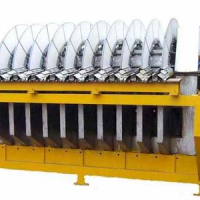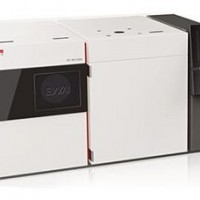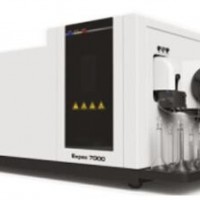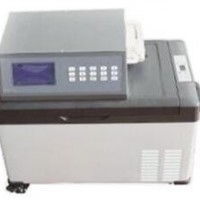MIBC(甲基异丁基甲醇):
Sichuan Nonferrous metal Mining & metallurgy Technology co.,ltd.
MATERIAL SAFETY DATA SHEET
COMPANY DETAILS
NAME ADDRESS Sichuan Nonferrous metal Mining & metallurgy Technology co.,ltd.
500 Middle Tianfu Dadao, High-tech Zone, Chengdu City, Sichuan
TELEPHONE NO. +86 (028) 6717 0811 FACSIMILE NO. +86 (028) 6717 0811
IDENTIFICATION
PRODUCT NAME: AERO 3758 Promoter
PRODUCT DEscriptION: MIBC
CHEMICAL COMPONENT: 4-Methyl-2-pentanol
HAZARD CLASS : 3 UN NO: 2053
HAZCHEM: XI PACKAGING GROUP: III
Risk Phrases: 10 37
PHYSICAL DEscriptION/PROPERTIES
Appearance & Odour: yellow to brown liquid with slight characteristic odour.
Boiling Point: 130 deg c Vapour Density : N.A.
Melting Point: - 90 deg c. Vapour Pressure: 7mbar @ 20 deg c
Flash Point : 60 deg c Specific Gravity: 0.806-0.809g/cm3
Volatiles by Volume: N.A. Solubility in Water: dispersely
PH : N.A density(20 deg): 0.97-1.0a 20 deg g/cc
LEL – UEL%: 1.0-5.5vol% Evaporation Rate: N.A
HAZARDOUS INGREDIENTS
Chemical Name
4-Methyl-2-pentanol 000108--112 > 99%
HEALTH HAZARD INFORMATION
Acute May be harmful if absorbed through the skin, swallowed or inhaled. May cause serious damage to eyes if splashed.
Ingested May cause irritation of the digestive tract. Will cause vomiting and headache, May have CNS effects.
Eyes Will cause irritation of the eye. Will cause redness, watering and itching of the eye. May cause bums to cornea on contact
Skin May cause severe irritation.
Inhaled Cause respiratory tract irritation. may cause headache, nausea and dizziness followed by vomiting, blurred vision, depression and unconsciousness.
First Aid Provide normal industrial first aid facilities including, as appropriate, eye-wash
Facilities stations and deluge showers located in the immediate area where product is handled
FIRST AID
Ingested Actions
Induce vomiting and rinse mouth with water and give two glasses of milk or water to drink. Seek urgent medical attention.
Eyes Actions
IMMEDIATELY: hold eyelids open and flush eyes with water for at least 15 minutes. Ensure that the underside of eyelids is flushed out. If symptoms persisted seek urgent medical assistance.
Skin Actions
IMMEDIATELY: Remove contaminated clothing, while in safety shower if necessary. Flush affected area with water for 5 minutes. Wash affected area with soap and water for further 5~10 minutes. Rinse well and pat dry. If symptoms persist or if burns are present seek urgent medical assistance.
Inhaled
IMMEDIATELY: Remove patient to fresh air. Loosen tight clothing and Actions allow to rest. Apply Artificial respiration and external cardiac massage if breathing is difficult or patient is turning blue. Unless recovery is almost immediate seek urgent medical assistance.
ADVICE TO DOCTOR
Provide supportive care and treatment based on the patient’s reactions to the exposure.
For further information contact:
POISONS INFORMATION
Other Health Information Oral Rat LD50= 2590 mg/kg. LD50 Dermal Rabbit 3560 uL/kg.
Exposure Standard Work Safe Australia has not established an exposure standard for this product. OSHA (USA) has established 25 ppm (skin) as the TWA for this product.
Engineering Controls Provide ventilation or extraction systems capable of maintaining workplaceair below the exposure standard recommended.
PERSonAL PROTECTION
VentilationProtection Provide general ventilation or local exhaust ventilation
Eye Protection Wear chemical safety goggles or full face shield to AS 1377. Do not wear contact lenses while working with this product.
Gloves Wear impervious PVA or Neoprene gloves, preferable elbow length.
Clothing Wear cotton coveralls fastened at the neck and wrists and supplemented when necessary by a full length acid apron (PVC or similar).
Industrial Hygiene Follow normal industrial / chemical hygiene practices.
FLAMMABILITY
Product is an spontaneously liquid and is combustible.
General Information:
As in any fire, wear a self-contained breathing apparatus in pressure-demand, MSHA/NIOSH (approved or equivalent), and fullprotective gear. Flammable liquidand vapor.
SPILLS AND DISPOSAL
Spills/Leaks:Use proper personal protective equipme. Absorb spill with inert material (e.g. vermiculite, sand or earth), then place in suitable container. Remove all sources of ignition. Use a spark-proof tool.
Disposal Disposal must be in accordance with local regulations for hazardous substances. Do not release to waterways or drains.
STORAGE AND TRANSPORT
Storage Keep away from heat, sparks, and flame. Flammables-area.
Transport Transport as UN 2282 Class 3 and Packaging Group II in accordance with the ADG Code, the IMDG Code or the IATA DG Regulations as appropriate to the mode of transport.
FIRE AND EXPLOSION HAZARDS
Fire Fighting Recommendations Fire fighters should wear self contained breathing apparatus and impervious clothing. Use large quantities of water and flush drains thoroughly.
Extinguishing Agents In case of fire, use water, dry chemical, chemical foam, or alcohol-resistant foam. Use agent most appropriate to extinguish fire.
Precautions Wear full encapsulated suit with SCBA. Avoid bodily contact. Run-off waters will be contaminated.
Other Labels: Risk and safety Phrases:
Information
Environmental Fate: Toxic to fresh and sea aquatic life. Detrimental effect of potable water. Not expected to bio-concentrate or bio-accumulate











